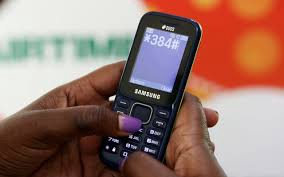How to Build a USSD Application

Unstructured, Supplementary Service Data (USSD) sometimes referred to as “Quick Codes” or “Feature Codes” is a communications protocol used by GSM cellular telephones to communicate with the mobile network operator’s computers.
It can be used for WAP browsing, prepaid callback service, mobile-money services, location-based content services, menu-based information services, and as part of configuring the phone on the network.

So in a nutshell when you buy airtime and what to recharge it on your mobile phone you need to enter some codes the same also when you are trying to make a bank transfer to another account you still need to enter a designated code in other to complete the transaction. So those shortcodes you enter are known as USSD.
So let’s see some of the requirement’s we need to achieve this:
- Basic understanding of PHP language
- A text editor (Preferably Visual studio code)
- Create an account on Africastalking
- Create an account on Heroku
- Download and install Git based on your OS
Why do we need those requirements, PHP will be the language we will use to give our commands while Africastalking will help us to create a two-way USSD functionality across mobile providers in Africa, Heroku is a cloud platform that we will deploy our code to manage. For further readings about them, you can check the link below
First, create an account on Africastalking to signup then follow the steps given and you will be brought to your dashboard.
Next, create an account on Heroku to signup then follow the steps given and you will be brought to your dashboard.
Also, download any text editor of your choice and open to it.
USSD messages are up to 182 alphanumeric characters long. Unlike short message service (SMS) messages, USSD messages create a real-time connection during a USSD session. The connection remains open, allowing a two-way exchange of a sequence of data. This makes USSD more responsive than services that use SMS.
Format
A typical USSD message starts with an asterisk (*) followed by digits that comprise commands or data. Groups of digits may be separated by additional asterisks. The message is terminated with a hash symbol (#).
USSD mode
Mobile-initiated
- USSD/ PULL or USSD/ P2A
- when the user dials a code, e.g. *139# from a GSM mobile handset
Network-initiated
- USSD/ PUSH or USSD/A2P
- when the user receives a push message from the network; primarily used for promotional services
